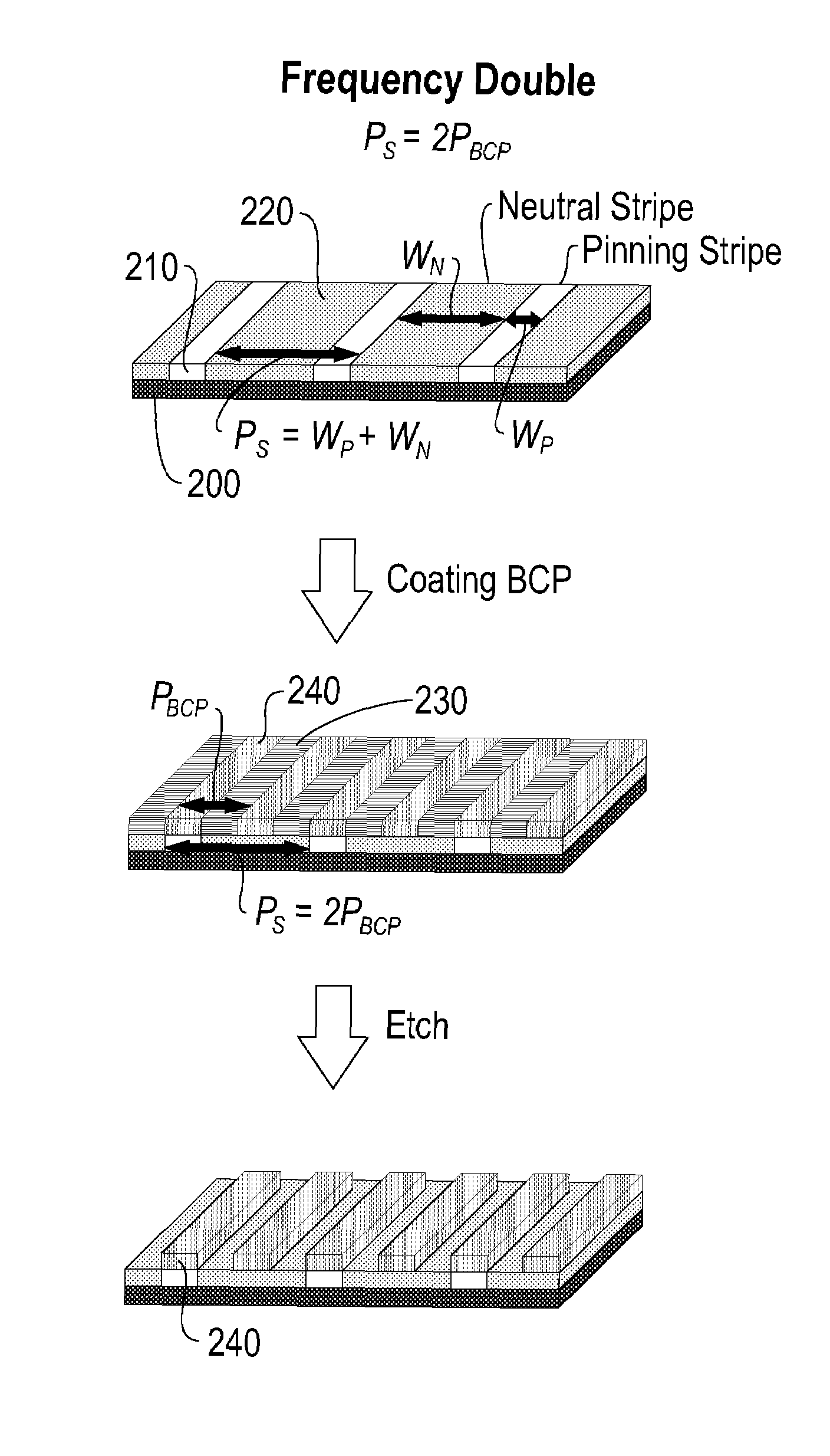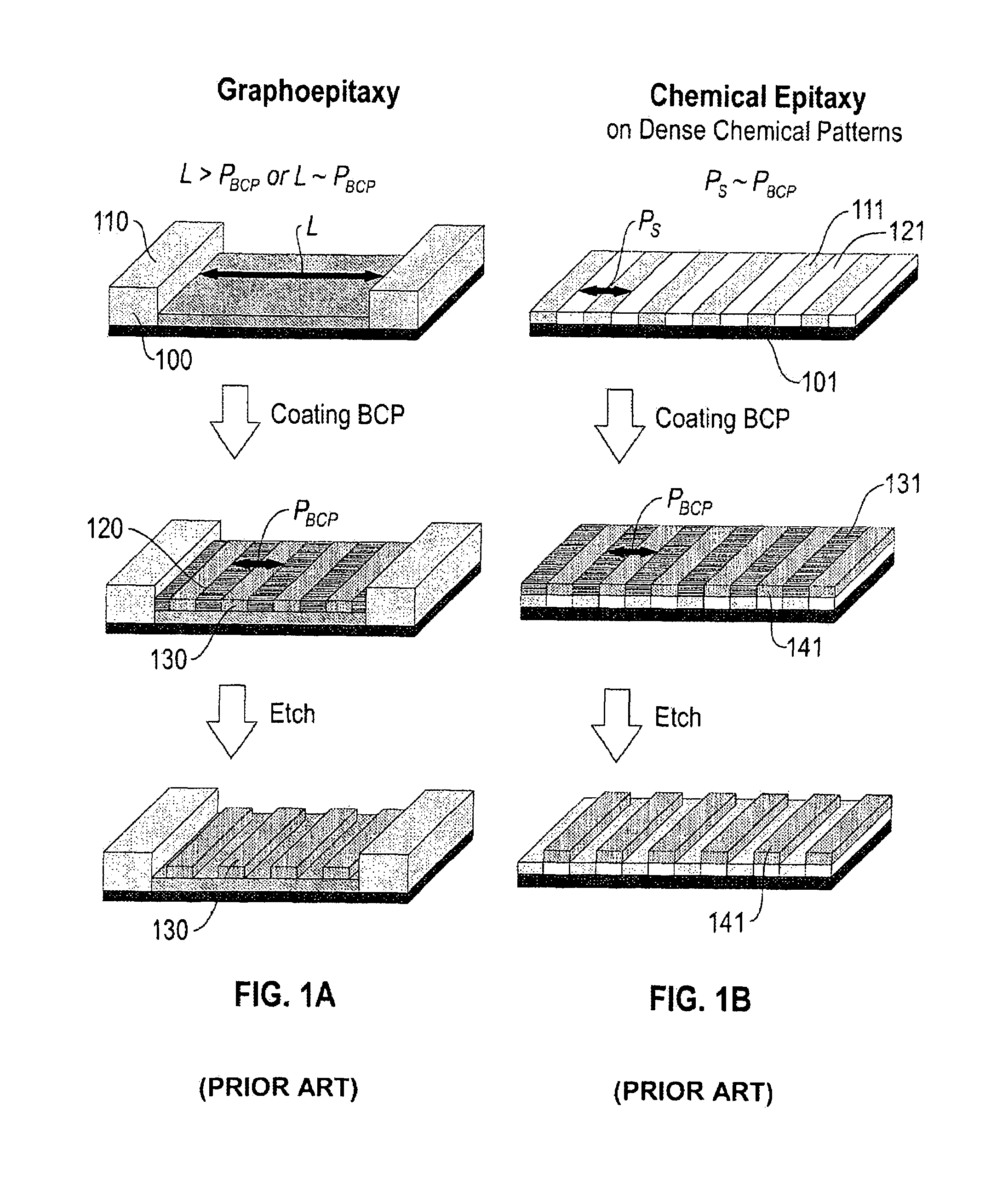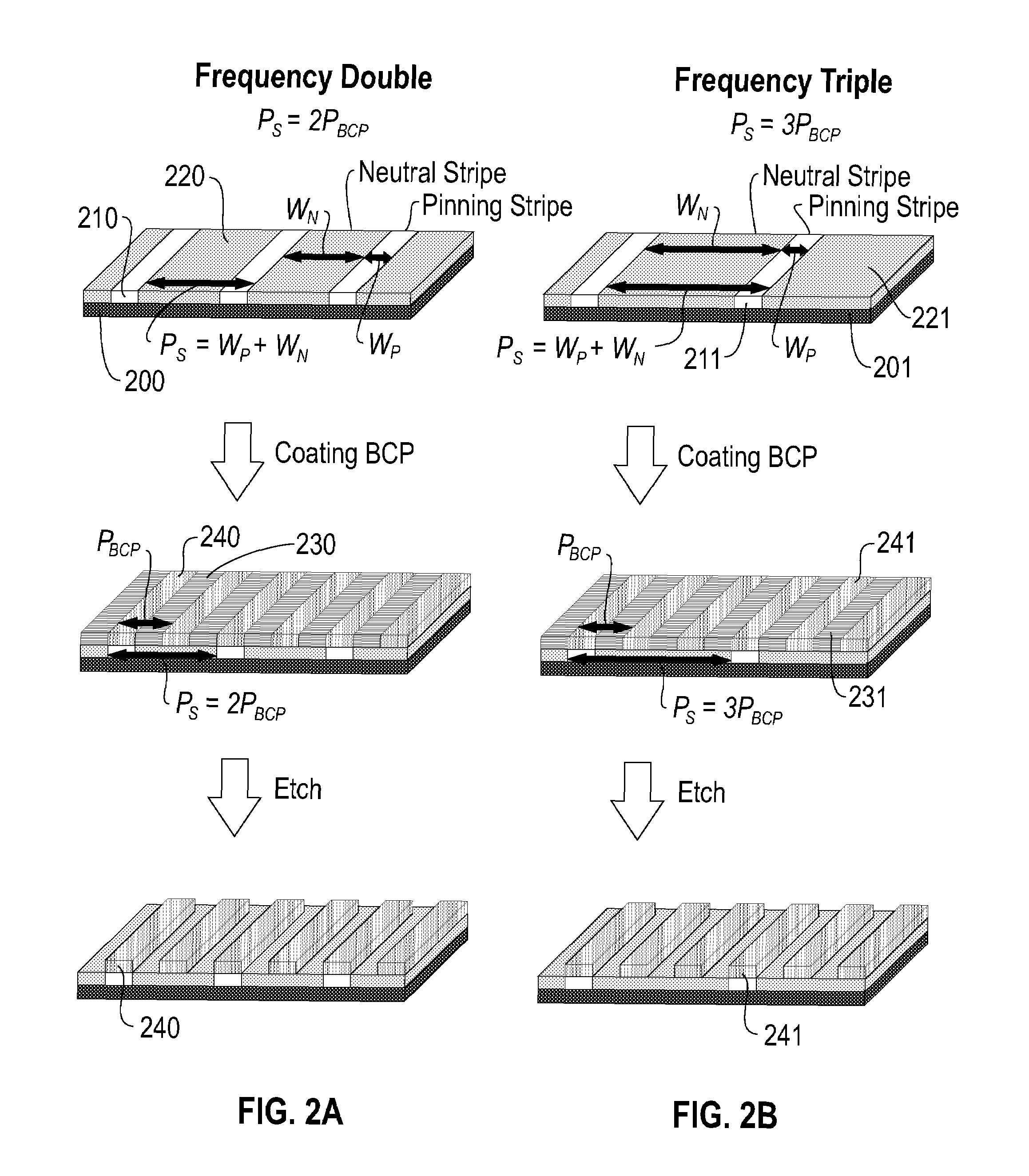Method of forming polymer features by directed self-assembly of block copolymers
- Summary
- Abstract
- Description
- Claims
- Application Information
AI Technical Summary
Benefits of technology
Problems solved by technology
Method used
Image
Examples
example 1
[0076]A sparse chemical pattern was prepared by a two-layer method in which a thin coating of hydridosilsesquioxane (HSQ) was cast on the top surface of cross-linked poly(epoxydicyclopentadienyl methacrylate epoxide-ran-styrene) (30:70 molar ratio, respectively; also abbreviated as PEpoxyDCPMA30-r-PS70), on a silicon substrate. The PEpoxyDCPMA30-r-PS70 layer was crosslinked using N-hydroxyphthalimide triflate as a thermal acid generator (10 wt % based on the total weight of thermal acid generator and polymer) by baking at 130° C. for 1 minute and then at 200° C. for 2 minutes. The PEpoxyDCPMA30-r-PS70 provided a neutral surface for poly(styrene-b-methylmethacrylate) (abbreviated as “PS-b-PMMA”), and HSQ provided a preferentially wettable surface for PMMA. The HSQ layer was imaged by direct write electron beam lithography and developed using an 0.26N tetramethylammonium hydroxide (TMAH) developer to generate a pattern of thin stripes having a total pitch of 57.5 nm, HSQ line width of...
example 2
[0077]A sparse chemical pattern was made by a two-layer process as described in Example 1, with the chemical pattern prepared from a thin coating of hydridosilsesquioxane (HSQ) formed on thermally cross-linked PEpoxyDCPMA30-r-PS70. The HSQ layer was imaged and developed as in Example 1 to generate thin stripes with a pitch of 87.5 nm, an HSQ line width of 20 nm and an HSQ line height of 2.5 nm (FIG. 4A). A 1.5 wt % solution of PS-b-PMMA in PGMEA was then cast on the sparse chemical patterns of HSQ / PEpoxyDCPMA-r-PS and baked at 240° C. for 1 minute. The polymer domains in the PS-b-PMMA film self-aligned on top of the sparse chemical pattern to form a frequency tripled pattern of alternating PS and PMMA stripes with pitch of about 28.2 nm (FIG. 4B).
example 3
[0078]A sparse chemical pattern was prepared by a two-layer method in which thin chromium (Cr) stripes were formed on the top surface of a thermally cross-linked organosilicate (OS) underlayer. The OS is a copolymer of methyltrimethoxysilane and tetraethoxysilane with a molecular weight Mw of 2,000 g / mol. The OS underlayer provides a neutral surface for the assembly of domains of the poly(styrene-b-ethylene oxide) (abbreviated PS-b-PEO, obtained from Polymer Source, with a molecular weight Mw for the PS block of 19,000 g / mol and for the PEO of 12,300 g / mol) cast along with a co-assembling OS component. The Cr surface serves as a preferentially wetted area for the PEO / OS domains. The sparse chemical pattern of thin Cr stripes having a pitch of 132 nm, a Cr linewidth of 20 nm, and a Cr line thickness of 2.5 nm was made by Cr deposition and liftoff of Cr from electron-beam patterned PMMA on the top surface of the OS underlayer. A 1% wt solution of PS-b-PEO and OS component (PS-b-PEO: O...
PUM
| Property | Measurement | Unit |
|---|---|---|
| Frequency | aaaaa | aaaaa |
| Affinity | aaaaa | aaaaa |
Abstract
Description
Claims
Application Information
 Login to View More
Login to View More - R&D
- Intellectual Property
- Life Sciences
- Materials
- Tech Scout
- Unparalleled Data Quality
- Higher Quality Content
- 60% Fewer Hallucinations
Browse by: Latest US Patents, China's latest patents, Technical Efficacy Thesaurus, Application Domain, Technology Topic, Popular Technical Reports.
© 2025 PatSnap. All rights reserved.Legal|Privacy policy|Modern Slavery Act Transparency Statement|Sitemap|About US| Contact US: help@patsnap.com



